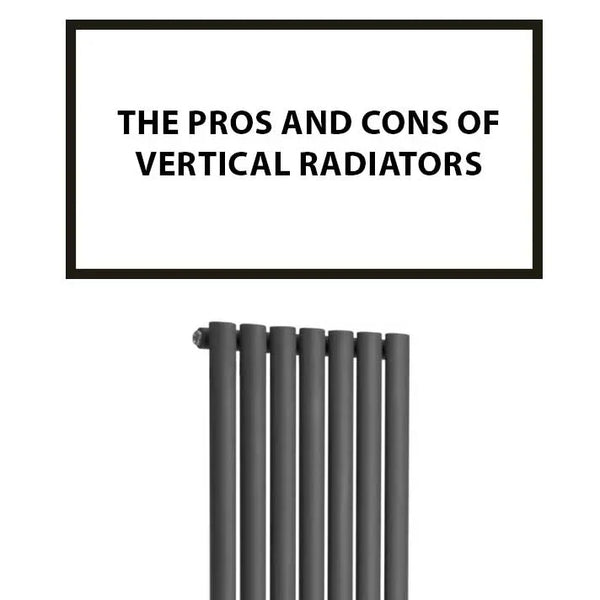Radiator Placement: How to Optimize Heat Distribution in Your Home

1. The Science of Heat Distribution
Radiators work by heating the air around them, which creates a convection current that circulates warm air throughout the space. Understanding this process is critical for achieving optimal heat dispersion in your house. When a radiator heats the air, it gets less dense and rises to the ceiling. As it cools, it falls back down, resulting in a steady flow of warm and cold air. This movement is what distributes heat evenly around the space keeping every corner pleasant.
However if the radiator is not properly positioned the process may be disturbed. For example, installing a radiator near a poorly insulated wall might cause heat loss. The cold air may interfere with the radiators efforts to warm the area, forcing the system to work harder and less effectively. As a result putting radiators where they can quickly reach and warm the coldest air in the room, such as near windows or exterior doors, guarantees that heat is dispersed more efficiently and consistently.
2. Key Considerations for Radiator Placement
Under Windows Towel Radiator
One of the most traditional and effective spots for radiator placement is under windows. This placement takes advantage of the natural flow of air within a room. Windows, particularly those that are older or single glazed, are often points of heat loss because they are less insulated than walls. As cold air enters through the window it immediately encounters the heat emitted by the radiator which warms it before it can circulate throughout the room. This not only combats drafts but also makes the room feel more comfortable quickly.
Furthermore, installing a radiator behind a window helps to minimise condensation, which occurs when warm, wet air hits a cold surface. By heating the air as it enters the room, the radiator minimises the temperature differential between the air and the window, lowering the chance of condensation. This arrangement is especially useful in spaces where windows take up a large section of the wall space, such as living rooms or bedrooms.
Near Entry Points
Radiators can also be strategically placed near access points like doorways. These locations are particularly vulnerable to drafts and cold air infiltration, especially in homes with poorly insulated doors or where doors are regularly opened and closed. Placing a radiator at an entry point guarantees that any cold air that enters the room is promptly warmed resulting in a consistent temperature throughout the area. This is especially useful in corridors or big rooms where cold air from other parts of the home may intrude.
In addition to improving comfort, this placement can also enhance energy efficiency. By heating the air near doors, you reduce the strain on your heating system, as it won’t have to work as hard to maintain a consistent temperature. This can lead to lower energy bills and a more sustainable heating solution overall.
Centralized Positioning
A centralised radiator location can provide improved heat dispersion in certain rooms, particularly those with an open floor plan or when furniture arrangement permits. Placing a radiator in the middle of a room or on an interior wall away from the external walls, allows heat to be distributed more evenly throughout the area. This is because heated air has less chance of escaping through windows or outside walls, which are normally cooler and more likely to absorb heat.
This approach is particularly effective in large rooms where a single radiator might struggle to heat the entire space if placed against an exterior wall. By moving the radiator to a more central location, you ensure that the warmth reaches every corner of the room more effectively. This method also works well in homes with modern insulation, where the loss of heat through walls and windows is minimized, allowing for more flexible radiator placement.
3. Avoiding Common Pitfalls
Behind Furniture
One of the most typical mistakes in radiator placement is to position them behind large pieces of furniture, such as sofas or closets. While this appears to be a space-saving approach, it has the potential to drastically reduce the radiator's capacity to heat the area. Furniture prevents the passage of warm air, trapping it between the radiator and the furniture, resulting in less heat circulating around the room. This not only makes the room seem cooler, but it also requires the heating system to work more to achieve the target temperature.
To avoid this problem, ensure that radiators are not blocked by bulky furniture. To allow the heated air to travel freely, leave at least a few inches between the radiator and any close items. If changing furniture isn't an option, try putting radiator covers that distribute heat into the room while also providing a surface for small objects. This guarantees that your radiator operates properly without interfering with the arrangement of your space.
In Corners
Placing radiators in corners of rooms can also be problematic as these areas are often less effective at distributing heat. The warm air produced by the radiator is likely to be trapped in the corner reducing its ability to circulate throughout the room. This can lead to uneven heating, with some parts of the room feeling much warmer than others. Over time, this can cause discomfort and lead to higher energy bills as your heating system works overtime to compensate for the poor distribution of heat.
Instead of installing radiators in corners, choose sites where warm air may readily flow and circulate around the room. Even in smaller spaces, it is preferable to position the radiator along a central wall or beneath a window where airflow is unrestricted. This allows heat to circulate more naturally throughout the area, resulting in a more consistent and comfortable temperature.
4. Special Considerations: Towel Rails
In spaces like bathrooms and kitchens, where space is often at a premium, heated towel rails offer a stylish and functional solution for both heating and storage. These rails are designed not only to warm your bathroom but also to keep your towels dry and toasty, adding a touch of luxury to your daily routine. Elegant Radiators provides a range of towel rails that are perfect for maximizing both heat and space in these rooms.
When deciding where to install a towel rail, keep usefulness and efficiency in mind. Ideally, the towel rack should be placed near the shower or bath, so towels may be kept warm and easily accessible. However, you should also make sure that the towel rail is installed in a location where it can efficiently heat the room. In smaller bathrooms, mounting the towel rail on an outer wall may be the best way to reduce heat loss, however in bigger bathrooms, a more central placement may give superior overall warmth.
In addition to their utilitarian benefits, towel racks may improve the aesthetics of your bathroom. With a wide range of designs available, from traditional chrome to modern matt black finishes, you can find a towel rail that suits your bathroom's décor while also offering effective heating. This dual-purpose solution is great for establishing a comfortable and beautiful bathroom setting.
5. Maximizing Efficiency with Thermostatic Valves
Thermostatic radiator valves (TRVs) are one of the most effective techniques to improve radiator efficiency and heat distribution in your house. These valves enable you to change the temperature of each radiator independently, allowing you to set various temperatures for different rooms based on their unique requirements. For example, you may like your living area to be warm and cosy while your bedroom is kept somewhat colder for better sleep.
TRVs can reduce overheating in already warm rooms, such as those that receive a lot of sunshine, as well as energy waste in areas that aren't used very often. This not only improves comfort, but also saves energy and cuts your heating expenditures. Furthermore, TRVs enable you to establish heating zones throughout your house, ensuring that heat is supplied precisely where it is required, without wasting energy on regions that do not require as much warmth.
6. Final Thoughts
Radiator location is crucial to the efficacy of your home's heating system. By carefully placing radiators where they can best transfer heat, such as beneath windows, near doors or centrally in bigger rooms, you can keep your house warm and pleasant while also increasing energy efficiency. Avoiding typical hazards, such as positioning radiators behind furniture or in corners, improves their efficiency and allows for a more level and constant dispersion of heat.
Elegant Radiators heated towel rails are a great choice for bathrooms that require both warmth and practicality. These multipurpose fixtures not only keep your towels warm and dry, but they also help to heat the room, guaranteeing a comfortable and luxury experience every day. By carefully planning radiator placement throughout your house, you can create a more pleasant, energy-efficient living space that satisfies all of your heating requirements.







